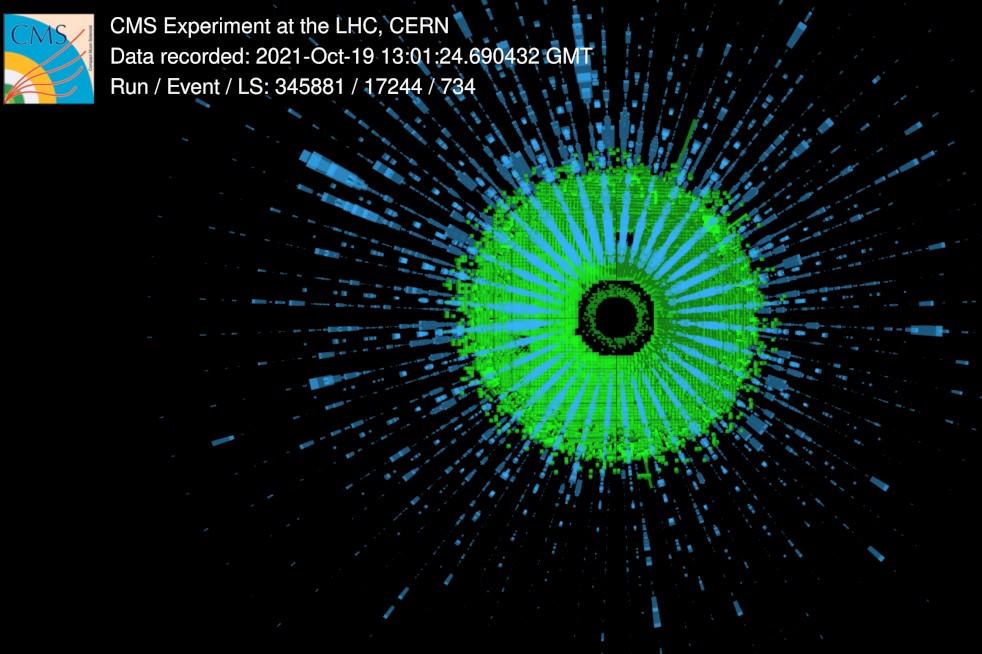Scientists and engineers in the UK have helped the Large Hadron Collider achieve unprecedented energy of 13.6 tera electron volts (TeV).
This marks the start of the accelerator's third run of data-taking for physics at CERN, on the French-Swiss border near Geneva.
The beam began circulating in April, after more than three years of upgrades and maintenance work to make it even more powerful.
The LHC machine and its injectors had previously been recommissioned to operate with new higher-intensity beams and increased energy.
Beam operators have now announced the beam is stable and ready to start taking data to be used for science.
The LHC will now run around the clock for close to 4 years at the record energy of 13.6 trillion electronvolts (TeV).
As part of the international effort, UK teams have led a series of vital work packages to improve the performance of each of the LHC’s four main instruments, as well as work on the beam itself.
The UK’s contributions to the upgrade are worth more than £25 million, funded by the Science and Technology Facilities Council (STFC).
Professor Mark Thomson, STFC Executive Chair and particle physicist, said: “The hard work of many highly-skilled scientists and engineers in the UK has been vital to get to this point.
“Today’s news is just the beginning of an exciting few years, as physicists at CERN harness the power of the upgraded machine and vast detectors to push the frontiers of knowledge. Time will tell whether the LHC and its detectors, with their improved capabilities, can provide a first glimpse of physics beyond our current understanding.”
The four big LHC experiments have performed major upgrades to their data readout and selection systems, with new detector systems and computing infrastructure.
The changes will allow them to collect significantly larger data samples, with data of higher quality than in previous runs. The ATLAS and CMS detectors expect to record more collisions during Run 3 than in the two previous physics runs combined. The LHCb experiment underwent a complete revamp and looks to increase its data-taking rate by a factor of 10, while ALICE is aiming at a staggering fifty-time increase in the number of recorded collisions.
Physicists and engineers from the University of Bristol have played a crucial role in the upgrade and preparation of the LHCb experiment, including the design, installation, and commissioning of the Ring-Imaging CHerenkov (RICH) detector.
This allows physicists to distinguish different types of sub-atomic particles as they fly through the apparatus at close to the speed of light. Bristol scientists have also been optimising the critical “trigger” system for the new data taking conditions at the CMS experiment. The trigger selects the most interesting collisions (about 1 in 40) for detailed analysis, making its decisions in a few microseconds.
Professor Joel Goldstein, Head of Particle Physics at the University of Bristol said: “The contribution of members of the Bristol group have been vital in preparing the LHC experiments for the new period of data taking. In particular, installing LHCb’s new, upgraded RICH detectors relied on the expertise and skill of Bristol personnel, who overcame numerous technical and pandemic-related challenges.”
With the increased data samples and higher collision energy, Run 3 will further expand the already very diverse LHC physics programme.
Thanks to the UK’s subscription to CERN, managed through STFC, UK physicists will have the chance to use the LHC to try to address fundamental questions, such as the origin of the matter-antimatter asymmetry in the universe, and will study the properties of matter under extreme temperature and density.
Scientists will also be searching for candidates for dark matter and for other new phenomena, either through direct searches or – indirectly – through precise measurements of properties of known particles
Professor Sinead Farrington from the University of Edinburgh is the UK spokesperson for the ATLAS experiment. She said: “This moment of reawakening the LHC accelerator and experiments to deliver data at a higher collision energy than ever before is an exhilarating time to be a particle physicist. The past three years of preparations will allow us to explore uncharted and rare interaction regimes.
“What will the constituent particles of the protons do when they interact with higher energies than ever before? It’s ten years since we discovered the Higgs boson but we’ve only recorded 10 percent of the data that the LHC will deliver.
“Will the holy-grail double-Higgs production occur in the expected way? What is dark matter? Why is the universe matter-dominated? The experiments are ready and waiting to probe these questions so that the LHC can uncover the nature and perhaps ultimately the fate of our universe.”
Professor Goldstein added: “The analysis of previous LHC data, including results in which the Bristol group has played a leading role, has shown some exciting hints that the current standard theoretical models may not be sufficient.
“We need to probe even further into rare decays of the B meson, the subtle differences between matter and antimatter, possible exotic decays of the Higgs boson, and rare production modes of the top quark. With new LHC data at a record energy, we hope to discover definitively where our current models break down, and what exciting new physics is hidden there.”
For more information on the UK’s involvement in the LHC upgrade click here.
